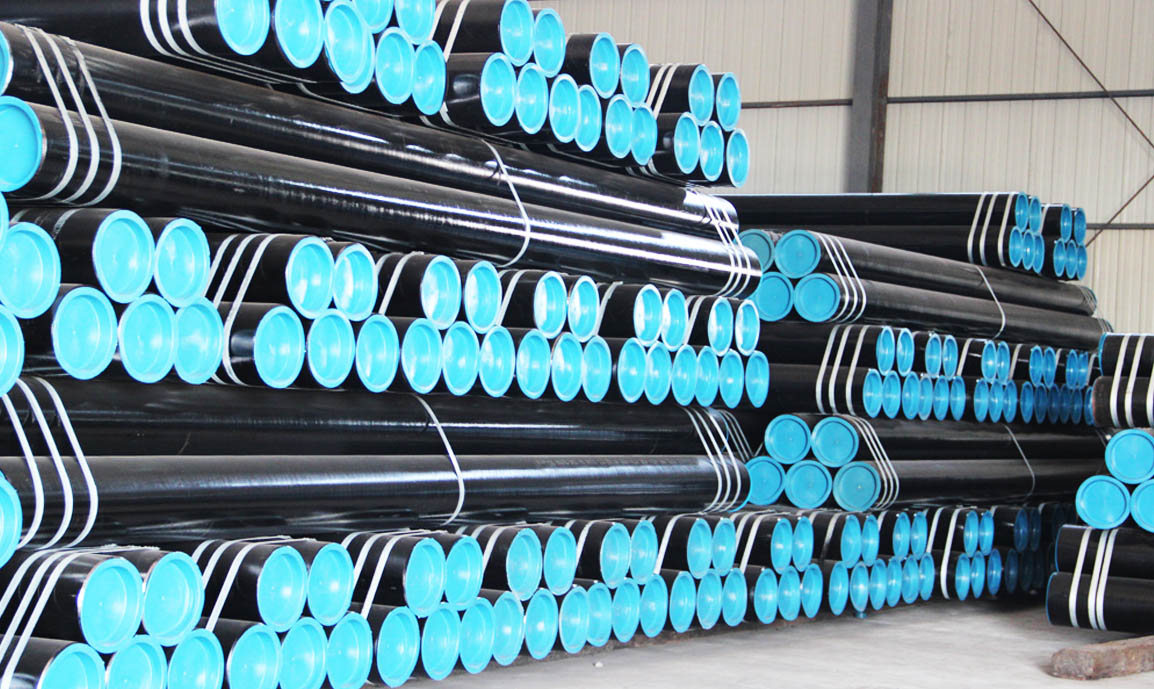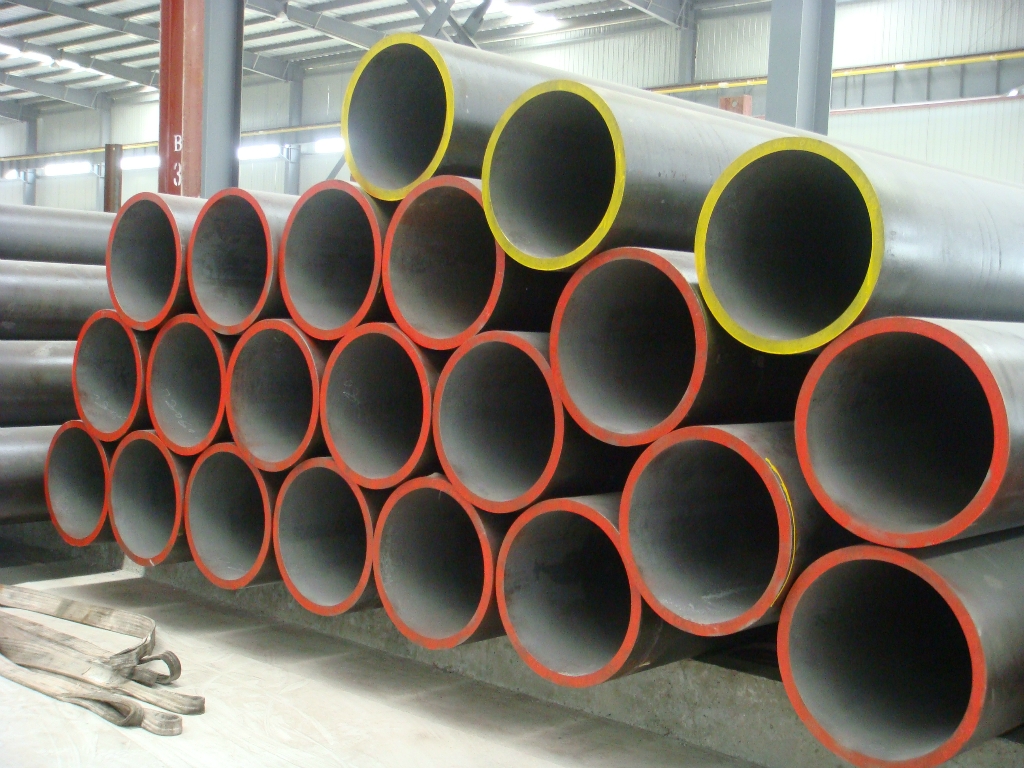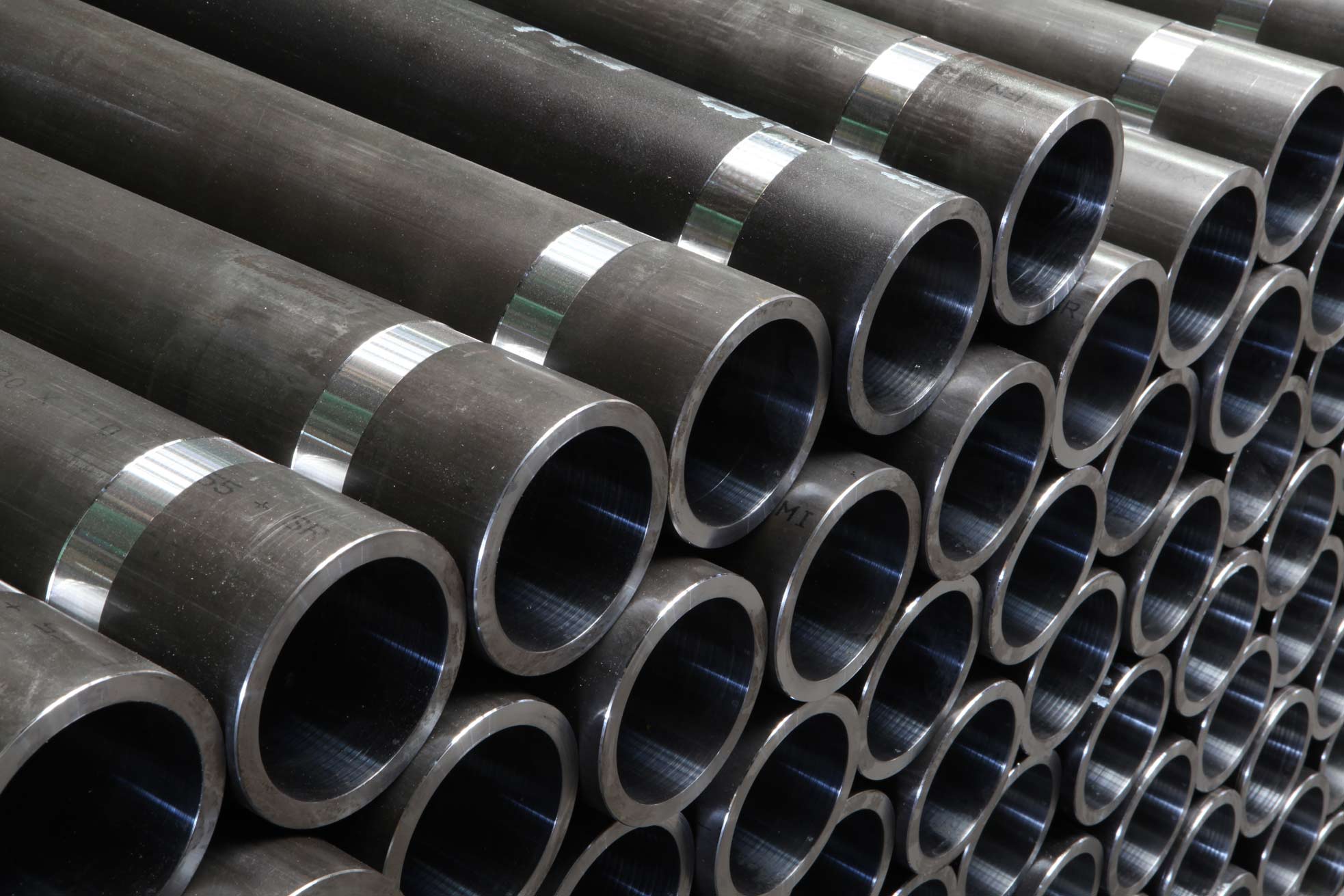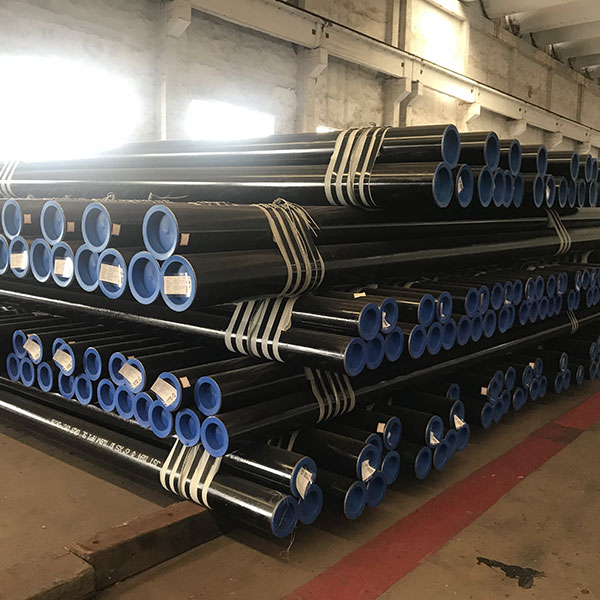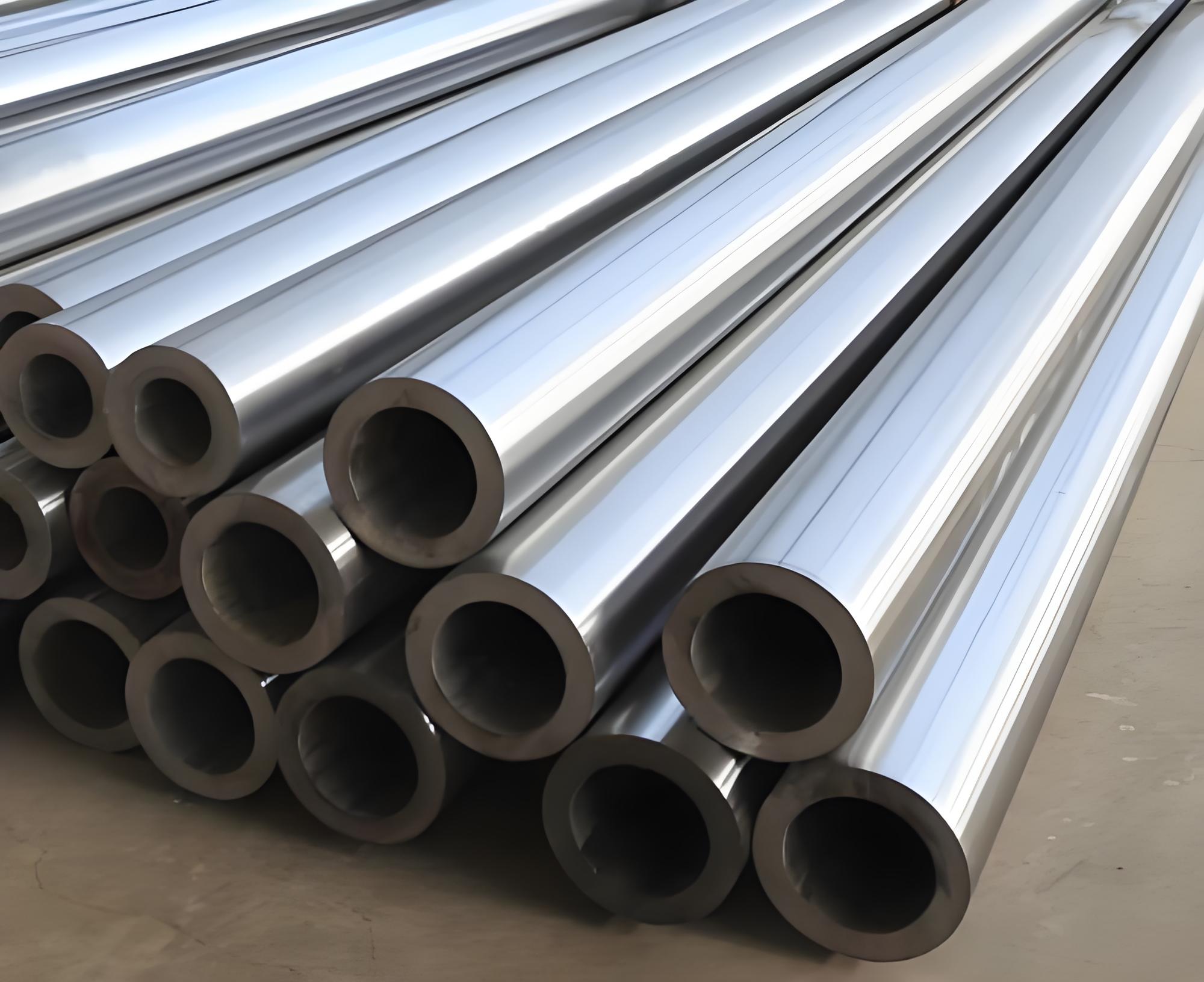Honed Tubes for Hydraulic Cylinders and the associated Hydraulic Cylinder Steel Pipes

The manufacturing of Honed Tubes for Hydraulic Cylinders and the associated Hydraulic Cylinder Steel Pipes represents a highly specialized and critically important segment of metallurgical and mechanical engineering, operating at the confluence of extreme precision, rigorous material science, and high-stakes functional reliability, as these components are the structural and functional core of virtually every piece of heavy machinery, motion control system, and industrial automation equipment globally. A hydraulic cylinder, the linear actuator that transforms fluid power into mechanical force, is defined by the integrity and internal surface quality of its cylinder barrel—the tube itself—which must withstand immense internal pressures (often exceeding $300 \text{ bar}$ or $4,350 \text{ psi}$), resist complex fatigue stresses from cyclical loading, and, most crucially, provide a flawless, micro-finished internal surface that ensures minimal friction and zero leakage of the high-pressure hydraulic fluid, thereby guaranteeing the efficiency and longevity of the sealing system. This comprehensive exploration must flow naturally, beginning with the fundamental technical requirements that dictate the necessity of specialized tubes, transitioning into a detailed analysis of the diverse material palette—from standard low-carbon steels to high-strength quenched and tempered alloys—that we employ under various international standards, meticulously examining the precision finishing processes like honing, and culminating in a full technical specification detailing the chemical, mechanical, and dimensional constraints that define the quality and application range of our products, ensuring a continuous, in-depth narrative that captures the full complexity of this essential manufacturing domain.
⚙️ The Imperative of Precision: Why Honed Tubes are the Heart of Hydraulic Systems
The functional distinction between a standard commercial steel tube and a Honed Tube for a Hydraulic Cylinder lies entirely in the Internal Surface Integrity and Dimensional Precision, a level of quality control that dictates the efficiency, sealing performance, and operational life of the final hydraulic cylinder, transforming the pipe from a mere conduit into a critical, high-precision pressure vessel. The internal surface of the cylinder barrel is the moving interface for the piston and its specialized sealing system (typically incorporating PTFE or polyurethane seals), and for the seals to function effectively, preventing the costly and inefficient bypass leakage of pressurized oil, the internal surface must exhibit two critical characteristics: Exceptional Smoothness and Highly Accurate Dimensional Tolerance. The necessary smoothness is achieved through the Honing Process, a mechanical finishing technique that utilizes abrasive stones rotated and reciprocated within the bore to meticulously remove material, eliminate geometric imperfections like ovality and taper, and, most importantly, create a specific, cross-hatched micro-finish pattern (measured by Roughness Average, Ra) that is not only smooth but also designed to retain a microscopic film of oil to lubricate the moving seal, a surface quality typically specified at $Ra \leq 0.4 \mu\text{m}$ (or often much lower), which is far beyond the capability of standard drawing or boring processes.
The second critical factor, Dimensional Precision, relates to the tube’s Inner Diameter (ID) tolerance, which must be extremely tight—often conforming to precision classes like $\text{H} 8$ or $\text{H} 9$ across the entire length—to ensure the piston seal maintains consistent compression and contact pressure as the piston traverses the bore, accommodating the inherent operational expansion and deflection of the cylinder under peak working pressure. Any deviation in $\text{ID}$ tolerance, ovality, or straightness directly translates into reduced sealing effectiveness, increased friction, power loss, and rapid seal wear, leading to premature cylinder failure. These stringent demands necessitate that the precursor material—the Hydraulic Cylinder Steel Pipe—must itself be manufactured to exceptionally high quality standards, often requiring processes like Cold Drawing Over Mandrel (CDSM) or Skiving and Roller Burnishing (SRB) prior to the final honing operation, ensuring the tube possesses high strength, low residual stresses, and close initial dimensional accuracy, minimizing the material removal required during the expensive final honing stage. Therefore, the selection of the base steel, its heat treatment, and the subsequent precision finishing processes are all tightly interwoven, forming a manufacturing ecosystem that guarantees the resulting honed tube possesses the certified pressure containment capability, the necessary mechanical properties to withstand fatigue, and the flawless internal geometry required to house a leak-free, high-performance linear actuator, defining the scope of our precision manufacturing across the required dimensional range of $40-480 \text{mm}$ $\text{OD}$ and $30-400 \text{mm}$ $\text{ID}$.
🔬 The Material Palette: A Foundation of Strength and Weldability
The foundational quality of our Honed Tubes is rooted in the strategic selection and metallurgical preparation of the raw steel pipe, drawing upon a diverse palette of international and domestic material grades—ranging from readily weldable carbon steels for standard applications to specialized high-strength low-alloy (HSLA) and quenched and tempered (Q&T) steels for heavy-duty, high-pressure environments—with each material chosen to meet specific functional requirements of strength, ductility, weldability, and cost-effectiveness, all governed by the strict chemical and mechanical constraints of standards like $\text{GB/T3639}$, $\text{EN10305}$, and $\text{ASTM A519}$. For the most common, general-purpose hydraulic cylinder applications where moderate pressure ratings and excellent weldability are required, the steel grades Q355B/Q355D (Chinese Standard $\text{GB/T1591}$), $\text{E355}$ ($\text{EN10305}$), and $\text{ST52}$ ($\text{DIN2391}$ equivalent) form the workhorse of our production; these are microalloyed or fine-grain structural steels characterized by a controlled, low carbon content and specific additions of Manganese ($\text{Mn}$) and Silicon ($\text{Si}$), which provide a minimum yield strength typically around $355 \text{ MPa}$ ($52 \text{ ksi}$), offering superior strength-to-weight over plain carbon steel while maintaining excellent weldability and good toughness, a crucial balance for tubes that are often welded to end caps or mounting components.
Moving up the performance and strength curve, we address the demand for higher pressure and fatigue resistance with medium-carbon and low-alloy steels, including C20/SAE1026 (lower carbon, good for lower pressure or non-welded applications), CK45 (a medium-carbon steel widely used for piston rods but also for moderate-strength cylinder tubes, requiring careful heat treatment control due to its higher carbon content), and the chromium-molybdenum (Cr-Mo) alloy grades 4130, 4140, 34CrMo4, 35CrMo, and 42CrMo. These $\text{Cr-Mo}$ alloy steels are the materials of choice for Heavy-Duty and High-Pressure Cylinders often found in mining, construction, and offshore applications, where the combination of the alloying elements allows them to achieve very high yield and tensile strengths through mandatory Quenching and Tempering (Q&T) heat treatments, providing superior resistance to fatigue and stress concentration, but their higher carbon and alloy content necessitate more complex and stringent control over the welding process to prevent hydrogen cracking and ensure the weld zone retains sufficient toughness. For instance, 42CrMo, a high-strength alloy with $\sim 1\%$ $\text{Cr}$ and $0.20\%$ $\text{Mo}$, can achieve tensile strengths exceeding $1000 \text{ MPa}$ after proper Q&T, transforming the tube into a powerful pressure containment vessel; the selection from this diverse material roster is dictated entirely by the end-use application, the required working pressure, the environmental temperature (especially for $\text{Q355D}$ which has guaranteed impact toughness at $-20^{\circ}\text{C}$), and the essential requirement that the selected grade must be capable of receiving the final high-precision honing finish without exhibiting detrimental microstructural inclusions or hardness variability that could compromise the bore quality.
🔥 Heat Treatment and Stress Control: The Mechanical Guarantee
The mechanical properties and dimensional stability of hydraulic cylinder pipes—and by extension, the final honed tubes—are critically dependent on the precise application of Heat Treatment Requirements, which are mandated by the governing standards and tailored to the specific material grade, serving not only to develop the necessary strength and toughness but also to minimize the internal residual stresses that can lead to warpage and dimensional instability during the subsequent precision machining and honing operations. For the primary low-alloy structural steels like $\text{Q355B}$ and $\text{E355}$, the tubes are often supplied in a Normalized or Normalized-Rolled (N) condition, a process involving heating the steel to a specific temperature above the upper critical point and cooling in air, which refines the grain structure, eliminates the coarse grain structure resulting from hot rolling, and provides the guaranteed minimum yield strength with excellent ductility and toughness, thereby ensuring the tube possesses the required baseline mechanical properties as specified by $\text{EN10305-1/2}$ or $\text{GB/T3639}$. However, for tubes designated for severe service, especially those produced via cold drawing ($\text{BK}$ or $\text{BKW}$ condition), a final Annealing or Stress Relieving (BKS) heat treatment is absolutely essential, where the tube is heated to a sub-critical temperature ($550^{\circ}\text{C}$ to $650^{\circ}\text{C}$) and slowly cooled; this process does not significantly alter the primary strength but dramatically reduces the internal tensile residual stresses induced by the cold working process, which, if left untreated, could cause the tube to deform, bow, or crack during subsequent honing or welding, directly compromising the final dimensional accuracy and structural integrity.
The higher-performance alloy steels, such as the $\text{Cr-Mo}$ grades ($\text{4140, 42CrMo}$), require the most stringent thermal processing: Quenching and Tempering (Q&T). Quenching (rapid cooling from high temperature) is performed to create a hard martensitic microstructure, which is then followed by tempering (reheating to a moderate temperature) to restore the necessary ductility and toughness, precisely tuning the material to achieve the high tensile and yield strengths required for the most demanding hydraulic applications, a process that must be meticulously controlled to achieve the desired hardness profile and avoid temper brittleness. Crucially, regardless of the primary heat treatment, the tubes may also undergo a final, proprietary Stabilization or Low-Temperature Stress Relief after the initial rough machining or the final honing operation to further ensure the finished cylinder barrel remains dimensionally stable throughout its operational life, counteracting any subtle stress redistribution caused by the material removal during the precision bore finishing. The rigorous requirement for these heat treatments is not just a compliance issue; it is the fundamental mechanical guarantee that the steel will perform predictably under extreme pressure, resist fatigue failure, and maintain the precise geometric tolerances necessary for the internal sealing system to function flawlessly, underscoring the absolute necessity for full traceability and certified mechanical testing for every batch of hydraulic cylinder pipe produced.
📏 Dimensional Precision and Finishing: The Honing Process
The transformation of a high-quality, heat-treated steel pipe into a finished, ready-to-use Honed Tube is accomplished through the meticulous application of precision machining and finishing techniques, where the final product’s quality is defined by the tight adherence to the specified $\text{Inner Diameter (ID)}$ tolerances and the achievement of the required low Internal Surface Roughness ($\text{Ra}$), making the Honing Process the ultimate quality gate in the manufacturing sequence. Our production focuses on a broad dimensional range, with Outer Diameters (OD) spanning $40 \text{mm}$ to $480 \text{mm}$ and corresponding Inner Diameters (ID) from $30 \text{mm}$ to $400 \text{mm}$, covering the spectrum from compact industrial actuators to massive heavy-duty cylinders, and regardless of size, the final precision demands remain non-negotiable. Before honing, the tubes often undergo either Skiving and Roller Burnishing (SRB) or specialized Deep Hole Boring; $\text{SRB}$ is particularly effective for large volumes and provides a smooth, low-residual stress surface by cutting a thin layer and then immediately compressing (burnishing) the surface with rollers, often achieving the required $\text{Ra}$ directly without final honing for moderate sealing requirements, while deep hole boring is necessary to correct severe initial $\text{ID}$ eccentricities or remove defects in very thick-walled pipes.
The final, definitive step is the Honing Operation, a slow, controlled abrasive process executed on specialized, high-precision honing machines that ensure the removal of material is uniform and axial, simultaneously correcting all remaining $\text{ID}$ deviations (ovality, taper, bell-mouth) and generating the desired microscopic surface finish. The quality of this finish is defined by several parameters: Roughness Average ($\text{Ra}$), typically $\leq 0.4 \mu\text{m}$ (sometimes $\leq 0.2 \mu\text{m}$ for specific applications), which measures the average height of the peaks and valleys; Rmax, the maximum peak-to-valley height; and the essential Cross-Hatch Angle, which is created by the combination of the rotating and reciprocating motion of the honing stones and is critical for oil retention and optimal seal lubrication, usually targeted between $20^{\circ}$ and $40^{\circ}$ to the axial line. The achieved $\text{ID}$ tolerance is rigorously verified using high-precision internal micrometers or air gauges, ensuring compliance with specified precision classes like $\text{H} 8$, where the total acceptable deviation for a $100 \text{ mm}$ $\text{ID}$ tube is a matter of a few hundredths of a millimeter, a dimensional control that is absolutely critical for the operational success of the high-pressure sealing system. This combination of material strength, stress-relieved stability, and micron-level finishing detail ensures that our Honed Tubes are certified to perform as the reliable, leak-free pressure containment vessels at the heart of any demanding hydraulic system.
🌍 Compliance and Standardization: Navigating Global Requirements
The manufacturing and certification of Hydraulic Cylinder Steel Pipe and Honed Tubes must strictly adhere to a complex matrix of international standards—including $\text{GB/T3639-2009}$, $\text{EN10305-1}$ and $\text{EN10305-2}$, $\text{ASTM A519-2006}$, and $\text{DIN2391}$—a commitment to standardization that ensures material traceability, guaranteed mechanical performance, and full dimensional interchangeability across global markets and diverse industrial applications, recognizing that compliance is not just a regulatory hurdle but a fundamental quality assurance guarantee. GB/T3639 (China’s National Standard) and EN10305 (European Standard) are particularly relevant for precision steel tubes, with $\text{EN10305}$ being highly specific: $\text{EN10305-1}$ governs seamless cold-drawn tubes (condition $\text{BK}$, $\text{BKS}$, $\text{NBK}$), while $\text{EN10305-2}$ covers cold-drawn welded tubes, both providing precise chemical composition ranges (e.g., $\text{E355}$ grade) and mandatory heat treatment conditions that define the achieved mechanical properties and the control of residual stress (e.g., $\text{NBK}$ or $\text{BKS}$ condition). Similarly, ASTM A519 and DIN2391 specify the requirements for seamless cold-drawn carbon and alloy steel mechanical tubing, which forms the necessary precursor for honing, dictating the permissible tolerances, testing frequencies, and material grades (e.g., $\text{SAE1026}$, $\text{4130}$, $\text{4140}$), ensuring that the base material possesses the inherent quality and uniformity required for the demanding subsequent machining and high-pressure service.
Compliance with these standards is comprehensive, extending from the initial chemical analysis of the steel billet—verified by Ladle Analysis and subsequent Product Analysis—through to the final inspection and mechanical testing of the finished tube. The standards mandate specific Tensile Requirements (minimum yield strength, tensile strength, and elongation) that must be verified by accredited laboratory testing for every batch of material, ensuring the actual mechanical performance meets or exceeds the minimum specified values for the chosen grade and heat treatment condition. Furthermore, the standards dictate the permissible Dimensional Tolerances for the $\text{OD}$ and $\text{WT}$ (Wall Thickness) of the pipe and, critically for hydraulic applications, provide guidance on the necessary precision of the $\text{ID}$ (often achieved via final honing to specific $\text{H}$ tolerances), alongside requirements for straightness and surface finish, ensuring the product is functionally ready for the sealing system installation. The ultimate proof of compliance is the Material Test Report (MTR) or $\text{3.1}$ Certificate, which provides full traceability from the steel melt to the finished product, containing the verified chemical composition, the confirmed heat treatment condition, and the measured mechanical test results, a certified document that is the final guarantee of quality and interoperability across the demanding global hydraulic industry, affirming the critical role of rigorous adherence to these international benchmarks.
📈 Applications and Features: The Versatility of Hydraulic Power
The versatility and high-performance features of our Honed Tubes and Hydraulic Cylinder Steel Pipes enable them to serve as core components across an immense spectrum of heavy industries, reflecting the indispensable role of hydraulic power in modern mechanical motion and force amplification, where the superior strength, fatigue resistance, and precision bore quality are non-negotiable prerequisites for operational success and safety. The Key Features that define the utility of our products are fundamentally rooted in the dual strength of the material and the surface finish: High Pressure Containment Capacity, guaranteed by the high yield strength of grades like $\text{E355}$ or $\text{4140}$ and the integrity of the seamless or precision-welded construction, allowing cylinders to operate safely at pressures up to $500 \text{ bar}$ or more; Exceptional Internal Surface Finish ($Ra \leq 0.4 \mu\text{m}$), which minimizes friction and wear on the piston seals, drastically extending the service life and reducing energy loss; and Superior Dimensional Accuracy ($\text{H} 8/\text{H} 9$ tolerance), which ensures reliable, leak-free sealing performance across the full stroke length of the cylinder.
These features translate directly into diverse, high-value applications: In the Construction and Earthmoving Industry, where cylinders are exposed to shock loads and harsh environmental conditions, our $\text{Q355D/E355}$ tubes are essential for the boom, stick, and bucket cylinders of excavators, bulldozers, and cranes; the use of $\text{Q355D}$ guarantees impact toughness even in cold operating climates. The Mining and Heavy Industry sectors rely on our high-strength $\text{4140/42CrMo}$ tubes for massive hydraulic presses, roof support systems, and large-bore actuators that handle immense static and dynamic forces, where the Q&T heat treatment is mandatory to resist fatigue. In the Offshore and Marine Sector, where corrosion resistance and extreme force transmission are paramount, our tubes are utilized in jacking systems, offshore cranes, and subsea manipulators, often requiring a commitment to the highest quality control (like ultrasonic testing) to ensure flaw-free pressure containment. Furthermore, the precision of our products is vital in Industrial Automation and Manufacturing, serving the actuators in injection molding machines, die-casting equipment, and high-speed robotic systems where smooth, precise, and repeatable motion is essential, demonstrating that the technical superiority of the Honed Tube is the enabler of reliable, high-force linear motion across the global industrial landscape, making our commitment to the tightest standards a commitment to the fundamental power infrastructure of the modern world.
📝 Consolidated Technical Reference Tables for Hydraulic Cylinder Tubes
| Category | Parameter | Seamless Tubes (EN10305-1, ASTM A519) | Welded Tubes (EN10305-2) | Specification Overview |
| Dimensions | Outer Diameter (OD) Range | $40 \text{mm} – 480 \text{mm}$ | $40 \text{mm} – 480 \text{mm}$ | Customizable wall thickness to meet pressure requirements |
| Inner Diameter (ID) Range | $30 \text{mm} – 400 \text{mm}$ | $30 \text{mm} – 400 \text{mm}$ | ID honed to $\text{H} 8/\text{H} 9$ precision tolerance | |
| Internal Roughness (Ra) | $\leq 0.4 \mu\text{m}$ (Standard Honed) | $\leq 0.4 \mu\text{m}$ (Standard Honed) | Cross-hatch pattern for seal lubrication | |
| Material/Standard | Structural Grades | $\text{E355}$, $\text{ST52}$, $\text{Q355B/D}$ | $\text{E355}$, $\text{ST52}$, $\text{Q355B/D}$ | Standard and Fine-Grain Structural Steel |
| Alloy Grades | $\text{CK45}$, $\text{SAE1026}$, $\text{4130}$, $\text{4140}$, $\text{42CrMo}$ | $\text{C20}$, $\text{SAE1026}$ (Limited welded alloy use) | Higher strength/fatigue resistance | |
| Standards | $\text{EN10305-1}$, $\text{ASTM A519}$, $\text{DIN2391}$, $\text{GB/T3639}$ | $\text{EN10305-2}$, $\text{GB/T3639}$ | Global compliance and interchangeability |
Chemical Composition (Typical Examples)
| Grade | Standard | C(Max) | Si(Max) | Mn(Max) | Cr | Mo | N(Max) |
| E355 | $\text{EN10305-1}$ | $0.22$ | $0.55$ | $1.60$ | – | – | $0.012$ |
| Q355D | $\text{GB/T1591}$ | $0.18$ | $0.50$ | $1.70$ | – | – | $0.015$ |
| 42CrMo | $\text{ASTM/EN}$ | $0.38 – 0.43$ | $0.40$ | $0.60 – 0.90$ | $0.90 – 1.20$ | $0.15 – 0.25$ | – |
| SAE1026 | $\text{ASTM A519}$ | $0.22 – 0.28$ | – | $0.60 – 0.90$ | – | – | – |
Mechanical Requirements and Heat Treatment
| Grade (Condition) | Standard | Heat Treatment Condition | Min. Yield Strength | Min. Tensile Strength | Min. Elongation (A%) |
| E355 (NBK) | $\text{EN10305-1}$ | Normalized (Stress-Relieved/Cold-Finished) | $355$ MPa ($52 \text{ ksi}$) | $490 \text{ MPa}$ | $22\%$ |
| Q355B | $\text{GB/T1591}$ | As-Rolled or Normalized | $355 \text{ MPa}$ ($52 \text{ ksi}$) | $470 \text{ MPa}$ | $20\%$ |
| 42CrMo (Q&T) | $\text{ASTM/EN}$ | Quenched and Tempered | $>650 \text{ MPa}$ ($>94 \text{ ksi}$) | $>850 \text{ MPa}$ | $10\%$ |
| SAE1026 (BKS) | $\text{ASTM A519}$ | Cold-Drawn, Stress-Relieved | $380 \text{ MPa}$ ($55 \text{ ksi}$) | $480 \text{ MPa}$ | $15\%$ |
Key Applications and Features
| Feature | Description | Material Grade Example | Industry Application | Schedule/Condition |
| High Strength | Excellent pressure containment and fatigue resistance. | $\text{42CrMo}$, $\text{Q355D}$ | Mining Hydraulic Props, Heavy Press Cylinders, Offshore Actuators | Seamless, Q&T, $\text{NBK}$ |
| Precision Bore | $\text{H} 8/\text{H} 9$ tolerance, $\text{Ra} \leq 0.4 \mu\text{m}$ surface finish. | All Honed Tubes | Any hydraulic cylinder requiring precise motion and leak-free sealing | Honed and Skived/Burnished |
| Weldability | Low carbon content and controlled alloying elements. | $\text{E355}$, $\text{Q355B}$ | Welded to end caps, mounting brackets on construction equipment. | Seamless/Welded, Normalized |
| Dimensional Stability | Low internal residual stresses after heat treatment. | $\text{E355 BKS}$, $\text{SAE1026 BKS}$ | Critical for long, large-bore cylinders to prevent warpage during machining/operation | Stress-Relieved Condition |
Would you like me to focus the next discussion on the specific non-destructive testing (NDT) requirements for hydraulic cylinder tubes, particularly the methods used to verify internal soundness and freedom from flaws in high-pressure seamless pipes?

